Bai Tu Long Bay vs Halong Bay: Which is Better for Cruising
Bai Tu Long Bay (Vietnamese: Vịnh Bái Tử Long) is an unmissable tourist attraction in Vietnam. Nestled in the famous Halong Bay area, Bai Tu Long Bay captures the imagination of travelers with the ageless beauty of its limestone islands, pristine beaches, and impressive karst mountains.

Though Bai Tu Long Bay is the laid-back alternative to Halong Bay, away from the touristy bustle, there is lots of local life and amazing destinations to explore. Let us guide you through Bai Tu Long Bay and help you have the Bai Tu Long bucket list vacation of a lifetime!
Information of Bai Tu Long Bay:
Covering an area of roughly 158 km2, Bai Tu Long Bay houses a variety of ecosystems and is made up of hundreds of islands and islets. The population of this area is approximately 320,000 people, who mostly reside in Cam Pha district, Quan Lan island, and Ngoc Vung Island.
While Ha Long Bay has the attention of tourists, the grand majority of its islands are still as pristine as when Mother Dragon and her children created them with their emerald teeth (well, at least according to the traditional lore).
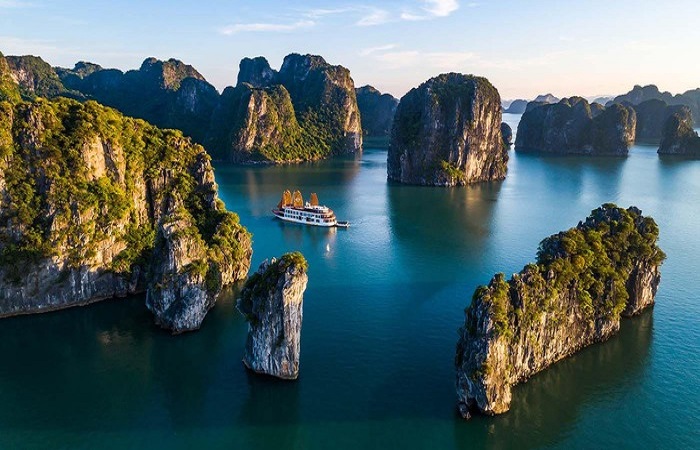
For travel-hungry tourists, Bai Tu Long Bay is home to many amusing destinations such as Bai Tu Long National Park, Vung Vieng fishing village, Cong Do area, Da Xep Park, Thien Canh Son cave, Cong Dam area, and Tra Gioi beach. If you like to keep things off the beaten track, this is an ideal destination for you.
Best Activities to Do and Things to See:
There’re various amazing landscape sites such as untouched beaches, amazing floating fishing village, numerous limestone islands and magnificent caves with tons of things to do in Bai Tu Long bay. There is a Bai Tu Long Bay national park in Van Don District is a nature treasure of the biosphere in Northern region of Vietnam such as mangrove forests, rare species of animals, coral reef and tropical eco system.
- Vung Vieng Fishing Village:
One of the last remaining of its kind, Vung Vieng Fishing Village is an important stop-off point for any visitors hoping to get an insight into traditional Halong culture and life. Although Vung Vieng fishing village is no longer inhabited full-time, the floating village is preserved for tourists to walk around in and learn about the deep-rooted Halong traditions.
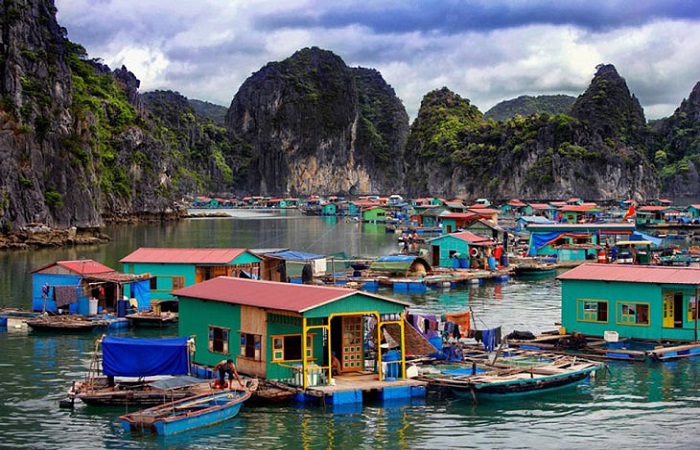
- Cong Dam Area:
With karsts that formed as long as 340 million years ago, Cong Dam Area is considered an ‘outdoor geological museum’. Cong Dam is also home to a fishing village with a population of 120. Deep-rooted traditions of fishing culture make Cong Dam a great place for tourists to talk with fishermen and listen to their interesting stories about daily life. Kayaking, boat rowing, and fishing with fishermen are all thrilling experiences that you should not miss when visiting the village.
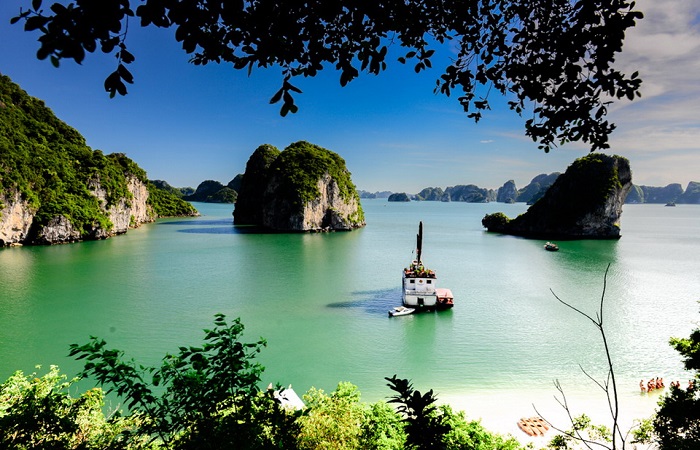
- Hon Co Island:
Hon Co Island, also known as Grass Island, is located in the Cong Do Area and is often visited by cruises to Bai Tu Long Bay. The island still retains its pristine and unique beauty. With white sand beaches and calm waters, Hon Co Island is the perfect place to enjoy thrilling activities like kayaking, swimming, and exploring caves.
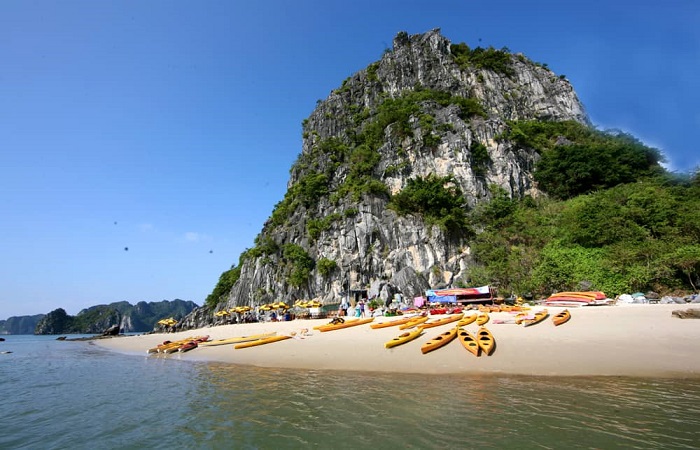
- Thien Canh Son Cave:
A large cavern with three main chambers on Thien Canh island, access to Thien Canh Son Cave is via a hidden path through a dense forest canopy next to a cliff face. The formations inside the Thien Canh Son cave are commonly likened to various everyday items; lotus blooms, a baby elephant or seals. There’s a nice beach here as well, making the Thien Canh Son Cave an ideal stop-off point for a few hours of exploring while on a cruise.
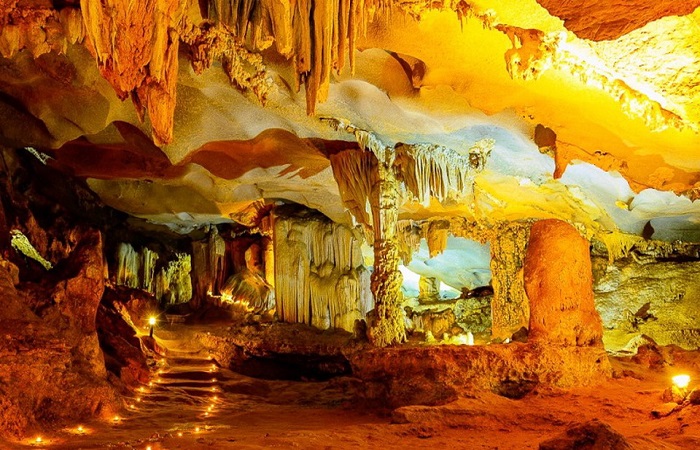
- Ban Chan Beach:
Very much an “off the beaten track” area, the white sand fringed by the idyllic sea at Ban Chan Beach makes this one of the most coveted beaches in the entire region. Surrounded by rugged rocks and lush green forest, Ban Chan Beach is a wonderful setting to enjoy a swim, kayaking or a beach barbecue.

- Bai Tu Long National Park:
A flourishing forest and marine conservation area, the Bai Tu Long Bay National Park covers 61.25 km2 and an even larger aquatic area of 96.58 km2. It is home to an impressive array of flora and fauna, including the leopard cat and the large Indian civet. Cruises to Bai Tu Long Bay will inevitably travel through the national park. So keep your eyes peeled for exotic fish and animals around every corner!
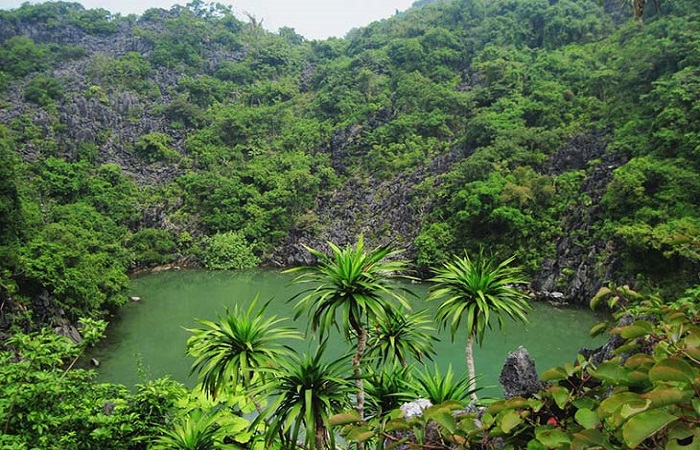
- Cap La Island:
Cap La Island is a wonderful attraction where visitors can find pristine natural landscapes and white sand beaches. Below the evergreen rainforest ecosystem, there are plenty of offshore locations for diving, kayaking, or fishing. For those looking to explore Vietnamese culture, stopping off at Cap La fishing village shows the simple and tranquil daily life of the locals as they go about their fishing activities.

- Cong Do Island:
Cong Do Island has many similar geological characters to its surrounding neighbors, but what makes this island and area unique is the variety of caves that stretch beneath its towering mountains. Visitors on an Indochina junk boat can explore the caves by kayak, or relax in the surrounding lagoons and beaches. Whether you want adventure or relaxation, Cong Do has something for everyone.

Weather, Climate and Best Time to Visit:
Bai Tu Long Bay is always beautiful at any time of year (Average Temperature: 15°C to 29°C), but if you are looking for sunny and steady weather with nice climate, the best time to go would be in early summer (February to May) and late autumn (September to November). At these times, there is more guaranteed sunshine, less rain and the weather is less unpredictable than it is from July to September, when storms are frequent.
Bai Tu Long Bay Weather Average by Month
| Months | High / Low (°C) | Rainfalls |
|
January |
18°/11° |
28 mm |
|
February |
18°/12° |
14 mm |
|
March |
25°/17° |
68 mm |
|
April |
27°/19° |
93 mm |
|
May |
31°/25° |
146 mm |
|
June |
32°/25° |
230 mm |
|
July |
31°/23° |
248 mm |
|
August |
33°/24° |
236 mm |
|
September |
31°/24° |
148 mm |
|
October |
28°/20° |
91 mm |
|
November |
25°/18° |
48 mm |
|
December |
18°/13° |
31 mm |
In general, the best time to visit Bai Tu Long Bay is between October and April, as the weather is mild and dry, and the visibility is also better. This is the peak tourist season, hence the bay can be quite crowded and the prices for tours and accommodation can be a bit higher. May to September is considered the low season, as the weather is hotter and more humid, and there is a higher chance of rain. The bay is less crowded during this time, therefore it's a great option for those looking for a more peaceful and less touristy experience.
How to get to Bai Tu Long bay?
Bai Tu Long Bay is a lesser-known but equally beautiful alternative to the more popular Halong Bay, located in Quang Ninh province, Vietnam. There are several ways to get to Bai Tu Long Bay that includes:
- By bus: From Hanoi, you can take a bus to Hon Gai Bus Station and then transfer to a smaller bus or minivan that will take you to the port where you can catch a boat to Bai Tu Long Bay.
- By boat: There are several daily boat tours that operate from Halong Bay to Bai Tu Long Bay. These tours usually include a bus or minivan transfer from Hanoi to Halong Bay, and then a junk boat ride to Bai Tu Long Bay. This is a popular option for those who want to explore the bay but don't want to spend the night on a boat.
- By seaplane: There are seaplane services that operate from Hanoi to Bai Tu Long Bay, which gives you a scenic view of the bay and the islands, it's a more exclusive and luxury option.
Halong Bay or Bai Tu Lang Bay?
We recommend Bai Tu Long bay for those who like to enjoy nice scenery like Halong Bay but less touristy and more authentic. There lots of places to explore in Bai Tu Long Bay which may takes from 3 days to 4 days to see them all.
Bai Tu Long Bay is a wonderful ‘off the beaten path’ alternative to the more famous Halong Bay, and should not be overlooked by those looking for an unforgettable experience in Vietnam. Visitors to Bai Tu Long will notice that the landscape is identical to that of Halong Bay, and that it is more of an extension of Halong rather than a neighbour.
Just like Halong Bay, throughout Bai Tu Long there are giant limestone karsts jutting out of the tranquil green waters. However, in Bai Tu Long the karsts seem slightly taller, the concentration of them feels somewhat denser and the number of tourists are fewer. All of this adds to the wonderful feeling of being somewhere almost undiscovered, allowing visitors to truly contemplate their surroundings in peace.
Recommended Tours:
See Also:

Best of Vietnam

Best Vietnamese Food You Have to Try in Vietnam
Best Food in Vietnam: Vietnamese Traditional Food is top World well known to be both healthy and...
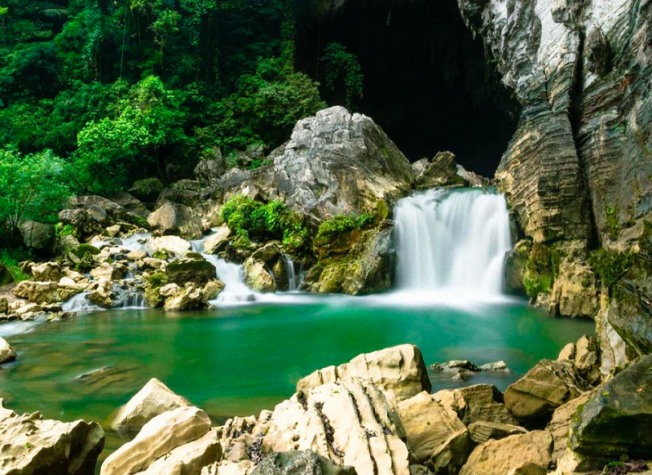
10 Best National Parks in Vietnam
Vietnam Travel Guide: If you look for the Best Wildlife Discovery Experience in Vietnam, here are...
Read More
Best Souvenir to Buy in Vietnam
If you look for Best Things to Buy when traveling to Vietnam to bring home for your family & friends...
Read More
The 10 Best Places to Visit in Vietnam
Vietnam Travel Guide: Home to an extensive collection of historical and cultural attractions,...
Read More
Top 10 Museums You Should Not Miss in Vietnam
Vietnam, 4.000 years old country has a unique and lengthy history, culture with 54 ethnic groups. It...
Read MoreFind your trip
Vietnam Best Tours
Vietnam Car Rental
Vietnam Travel Blog
- Vietnamese People: Origin, History, Culture and Traditions
- Vietnam Currency: Best ATM and Places to Exchange Money
- Vietnam Map: Regions, Cities & Provinces Map of Vietnam
- What is illegal Things in Vietnam: Rules & Laws for Tourists
- Best Time to Travel to Vietnam to Avoid the Bad Weather
- Vietnam News: Population & Religions of 54 Ethnic Groups









